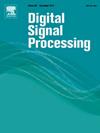A novel dataset and a two-stage deep learning method for breast cancer mitosis nuclei identification
IF 2.9
3区 工程技术
Q2 ENGINEERING, ELECTRICAL & ELECTRONIC
引用次数: 0
Abstract
Mitosis nuclei counting is one of the important indicators for the pathological diagnosis and histological grade of breast cancer. With the development of deep learning methods, there have been some models for the automatic recognition of mitosis nuclei with good performance. However, due to the complex and diverse evolution stages of mitosis nuclei, automatic recognition of mitosis nuclei is very challenging, and the performance and generalization ability of the currently proposed models need to be greatly enhanced. Meanwhile, the manual annotation of images in deep learning-based model training requires experienced pathologists, which is very time-consuming and inefficient. In this paper, we propose a two-stage mitosis segmentation and classification method, named SCMitosis. Firstly, the segmentation network achieves high recall performance by incorporating the proposed depthwise separable convolution residual block and a channel-spatial attention gate, where the latter innovatively combines both channel and spatial attention mechanisms and utilizes a simple GRU unit for effective feature fusion. Then, a classification network is cascaded to improve the detection performance of mitosis nuclei further. The proposed model is verified on the pixel-level annotated ICPR 2012 dataset, which was annotated by professional pathologists, achieving the highest F1-score of 0.8687 compared with the current state-of-the-art algorithms. Additionally, the model demonstrates superior performance on the Ganzhou Municipal Hospital (GZMH) dataset, also annotated by professional pathologists, which was first released with this paper by the authors.
求助全文
约1分钟内获得全文
求助全文
来源期刊

Digital Signal Processing
工程技术-工程:电子与电气
CiteScore
5.30
自引率
17.20%
发文量
435
审稿时长
66 days
期刊介绍:
Digital Signal Processing: A Review Journal is one of the oldest and most established journals in the field of signal processing yet it aims to be the most innovative. The Journal invites top quality research articles at the frontiers of research in all aspects of signal processing. Our objective is to provide a platform for the publication of ground-breaking research in signal processing with both academic and industrial appeal.
The journal has a special emphasis on statistical signal processing methodology such as Bayesian signal processing, and encourages articles on emerging applications of signal processing such as:
• big data• machine learning• internet of things• information security• systems biology and computational biology,• financial time series analysis,• autonomous vehicles,• quantum computing,• neuromorphic engineering,• human-computer interaction and intelligent user interfaces,• environmental signal processing,• geophysical signal processing including seismic signal processing,• chemioinformatics and bioinformatics,• audio, visual and performance arts,• disaster management and prevention,• renewable energy,
 求助内容:
求助内容: 应助结果提醒方式:
应助结果提醒方式:


